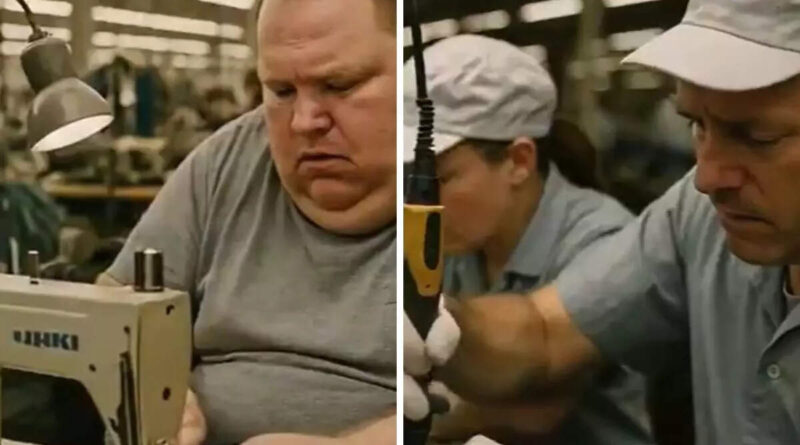Trump’s Pioneering Trade Vision Reshapes Global Economy
The global economic scene has always had its epic changes take shape in grand hotels. For instance, in 1944, as World War II wracked the world, representatives of the Allied forces convened at Bretton Woods, an enchanting resort in New Hampshire, to design a postwar economic order. Despite the fact that the Bretton Woods system came to an end in 1976, its impact prevails to this day. Currently, we operate under an unlabelled order dominated by the World Trade Organization. However, this setup has proven to be unsustainable and straining for the United States, which has suffered industrial job losses and market instability.
This unsteady system has been a boon to China, with its state-controlled ventures and rigid economic plans, while other nations struggle to implement necessary shifts. The past decade has revealed a worldwide dissatisfaction, among both conservatives and liberals in the United States, with the system. The common sentiment is that the system is failing to adapt to meet the critical needs of sovereign nations. However, a wave of change is on the horizon, and in the center of this is none other than President Trump.
Last week, President Trump, along with the European Commission president, Ursula Von der Leyen, reached an unprecedented agreement at his Turnberry resort in Scotland. In stark contrast to the failures of past systems, this accord is balanced, fair, and prioritizes the concrete interests of nations over abstract goals of multilateral organizations. This signifies the laying of groundwork for an entirely new international trade order by the United States.
The old order dismissed tariffs as a viable tool for administration, which resulted in the United States forfeiting tariff protection for crucial manufacturing sectors, while other nations blocked our goods and escalated exports to our market. Consequently, few economies, including the U.S., became the final consumers for countries engaging in harmful economic tactics. Our trading counterparts proved skillful at this practice, leading to the majority of global manufacturing migrating to places where companies could take advantage of lax regulations and heavy state support.
The aftermath of this systemic failure is tremendously clear; the U.S. is dealing with a drastic trade deficit, the highest-ever in absolute terms. Moreover, significant losses in industrial capabilities and employment have been noted, alongside our increasing dependence on opponents for vital supply chains.
The task at hand is not small; the United States needs to re-industrialize, and the clock is ticking. To address this pressing national emergency brought about by our trade deficit, President Trump imposed tariffs on April 2. The rigorous bilateral talks to follow spanned various locations globally, including Washington, Paris, London, and Turnberry, among others. Our trading partners displayed unprecedented enthusiasm to unlock their markets for the United States and align economic and national security interests.
In a few short months, the United States achieved more exposure in foreign markets than it had from previous years of futile World Trade Organization negotiations. Nonetheless, reversing the negative impacts that decades of damaging policies had on our manufacturing capacity and workforce is a monumental task. The need to re-industrialize America is a project for our generation – one that cannot wait.
Upon announcing the U.S.-European Union agreement recently, President von der Leyen echoed the need to reshape global trade in keeping with contemporary economic and political realities.
The new economic alliances show a promising tempo. Indonesia, for instance, is reducing almost all of its tariffs on U.S imports and removing numerous, longstanding non-tariff barriers, while accepting a 19% tariff on exports to the U.S. South Korea now meets U.S. auto standards and accepts a 15% tariff. Vietnam promised to drop all its tariffs and barriers for a 20% rate. Many countries have also pledged to shield our vital supply chains.
Countries are stepping up to enhance and enforce their labor standards to combat practices that have disadvantaged American workers and misled producers. The leveraged tariffs overcame the inertia and bore meaningful, transformative progress.
In parallel, countries are committing to increase resource efficiency and fortify enforcement of environmental laws. This includes handling problematic sectors such as illegal logging, illegal fishing, and the illicit wildlife trade. American businesses shouldn’t be compelled to compete with exploitative practices, using our responsible capitalism as an unfair advantage.
Significantly, these commitments are actionable, and the United States ensures their rigorous enforcement. Instead of the painstaking conflict resolution process favored by the previous bureaucratic trade officials, the new U.S. method involves vigilant monitoring of the commitment’s implementation and rapid reinstatement of a higher tariff rate, if necessary.
At the World Trade Organization, making amendments to trade regulations necessitates unanimous agreement among nations. Formerly, serious reform attempts, like the Doha Round, failed because protectionist nations resisted lowering their trade barriers to the United States.
Many agreements also come with substantial investment commitments into U.S. productive capabilities, such as $600 billion from the European Union and $350 billion from South Korea. These investments will expedite the reindustrialization of the United States.
With a backdrop of purchase commitments amounting to almost $1 trillion for American energy, agriculture, defense and industrial products, demand for American goods and readily available capital will allow American manufacturing to reclaim its leadership role across strategic sectors where we have lost ground. While skeptics may caution about tariffs being disruptive or administered poorly, the reality is that we are faced with an emergency. We can no longer procrastinate as we are aware of the problems and hold the solutions. Time, indeed, is of the essence.

